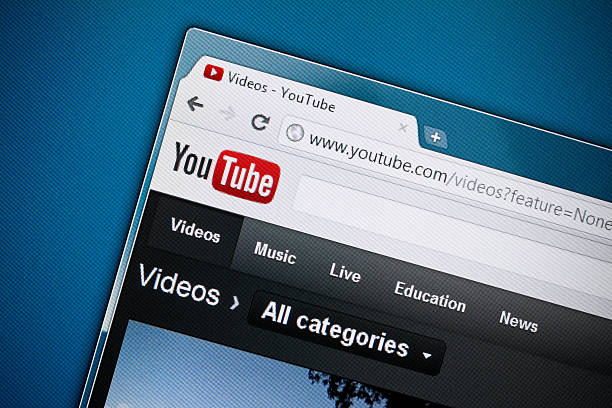Introduction
In today’s digital landscape, where attention spans are shorter than ever and competition for consumer engagement is fierce, YouTube advertising has emerged as a powerful tool for businesses to reach their target audience effectively. With its vast user base and diverse content offerings, YouTube provides an unparalleled platform to showcase your brand, products, and services. However, to maximize the benefits of YouTube advertising, a well-thought-out budgeting strategy is crucial. In this comprehensive guide, we will delve into the intricacies of YouTube advertising and provide you with valuable insights on how to make the most of your advertising budget.
Table of Contents
- Introduction
- Understanding YouTube Advertising
- Setting Your Advertising Budget
- Targeting Your Audience
- Crafting Compelling Ad Content
- Monitoring and Optimization
- Conclusion
- Frequently Asked Questions (FAQ) – YouTube Advertising
- 1. What is YouTube advertising?
- 2. How much does YouTube advertising cost?
- 3. What are TrueView ads?
- 4. How do I target my ads to the right audience?
- 5. What is remarketing, and how does it work on YouTube?
- 6. How do I create compelling ad content?
- 7. What metrics should I track to measure ad performance?
- 8. How often should I optimize my YouTube ad campaigns?
- 9. Can I change my budget or pause my campaigns after they’re live?
- 10. Is YouTube advertising suitable for all businesses?
Understanding YouTube Advertising
YouTube advertising offers various formats, allowing advertisers to connect with their audience through engaging video content. The primary ad formats include:
- TrueView In-Stream Ads: These ads play before or during a YouTube video. Viewers have the option to skip the ad after a few seconds, and advertisers are only charged if the viewer watches a significant portion of the ad.
- TrueView Discovery Ads: These appear in YouTube search results or related video suggestions. Advertisers pay when viewers click on the ad to watch it.
- Non-Skippable In-Stream Ads: These are short, non-skippable ads that play before, during, or after a video. Advertisers are charged based on impressions.
- Bumper Ads: These are brief, non-skippable ads of up to six seconds that play before a viewer’s chosen video.
Setting Your Advertising Budget
Before diving into YouTube advertising, it’s essential to establish a clear budget that aligns with your marketing goals. Consider the following steps:
1. Define Your Objectives
Outline your advertising objectives. Are you looking to increase brand awareness, drive website traffic, or boost product sales? Each goal may require a different budget allocation and ad strategy.
2. Research Industry Standards
Research typical advertising costs within your industry and desired ad format. This will give you a ballpark figure to start with.
3. Calculate a Test Budget
Allocate a small budget initially for testing different ad campaigns and targeting options. This experimentation phase will help you identify what works best for your audience.
4. Consider the Lifetime Value of Customers
Factor in the potential lifetime value of customers acquired through YouTube advertising. This perspective can justify a higher budget if your products or services have substantial long-term value.
5. Monitor and Adjust
Constantly monitor the performance of your ads and be prepared to adjust your budget based on real-time data. Allocate more budget to well-performing campaigns and tweak or pause underperforming ones.
Targeting Your Audience
YouTube offers robust targeting options to ensure your ads reach the right viewers:
1. Demographic Targeting
Specify age, gender, location, language, and other demographic factors to refine your audience.
2. Interest-Based Targeting
Target viewers based on their interests, behaviors, and the types of videos they watch.
3. Remarketing
Show ads to users who have previously interacted with your brand or visited your website.
4. Custom Intent Audiences
Reach users based on keywords related to their recent online searches and activities.
5. Placement Targeting
Select specific YouTube channels or videos where you want your ads to appear.
Crafting Compelling Ad Content
A well-crafted ad is essential for capturing viewers’ attention and driving desired actions:
1. Engaging Thumbnail and Title
Create an eye-catching thumbnail and a compelling title that piques viewers’ curiosity.
2. Clear and Concise Message
Deliver your message succinctly. Focus on a single key message to avoid overwhelming viewers.
3. Call to Action (CTA)
Include a strong CTA that guides viewers on what to do next, whether it’s visiting your website, making a purchase, or subscribing to your channel.
4. Visual and Audio Quality
Ensure your video has high visual and audio quality. Poor production values can negatively impact your brand’s credibility.
5. Mobile-Friendly Design
Given the prevalence of mobile viewing, optimize your ad for various screen sizes.
Monitoring and Optimization
Your job doesn’t end after launching your ads. Continuous monitoring and optimization are crucial:
1. Analyze Performance Metrics
Track metrics like click-through rates (CTR), conversion rates, and view-through rates (VTR) to gauge ad performance.
2. A/B Testing
Test different ad variations to identify what resonates best with your audience.
3. Budget Reallocation
Shift your budget towards well-performing campaigns and adjust targeting options as needed.
4. Ad Scheduling
Identify peak viewing times and schedule your ads to maximize visibility.
Conclusion
YouTube advertising presents an incredible opportunity for businesses to connect with their target audience and achieve their marketing objectives. By strategically budgeting and optimizing your ad campaigns, you can ensure that every dollar spent on YouTube advertising delivers a significant return on investment. Remember, success in YouTube advertising requires a blend of creativity, data analysis, and a willingness to adapt to the ever-evolving digital landscape. By addressing common questions and concerns through this FAQ section, we aim to equip you with the knowledge needed to embark on your YouTube advertising journey with confidence. Remember, staying informed, monitoring performance, and adapting your approach will contribute to your success in the dynamic realm of YouTube advertising.
Frequently Asked Questions (FAQ) – YouTube Advertising
1. What is YouTube advertising?
YouTube advertising involves creating and promoting video content on the YouTube platform to reach and engage with a specific target audience. Advertisers can choose from various ad formats, such as in-stream ads, discovery ads, non-skippable ads, and bumper ads, to convey their messages effectively.
2. How much does YouTube advertising cost?
The cost of YouTube advertising varies depending on factors such as the ad format, targeting options, competition, and the duration of your campaign. Advertisers can set their budgets and bidding strategies based on their goals and financial capacities.
3. What are TrueView ads?
TrueView ads are a type of YouTube advertising where advertisers are only charged when viewers engage with their content. In TrueView in-stream ads, advertisers pay when viewers watch a substantial portion of the ad. TrueView discovery ads are paid when viewers click on the ad to watch it.
4. How do I target my ads to the right audience?
YouTube offers various targeting options, including demographic targeting (age, gender, location), interest-based targeting, remarketing, custom intent audiences, and placement targeting. Carefully defining your target audience and utilizing these options can help you reach the viewers most likely to be interested in your content.
5. What is remarketing, and how does it work on YouTube?
Remarketing allows you to show ads to users who have previously interacted with your brand, visited your website, or engaged with your YouTube channel. This helps you re-engage potential customers and remind them of your products or services.
6. How do I create compelling ad content?
Creating compelling ad content involves designing an engaging thumbnail and title, delivering a clear and concise message, including a strong call to action (CTA), ensuring high-quality visuals and audio, and optimizing for mobile viewing. The goal is to capture viewers’ attention and encourage them to take the desired action.
7. What metrics should I track to measure ad performance?
Key metrics for measuring ad performance include click-through rates (CTR), conversion rates, view-through rates (VTR), engagement rates, and return on ad spend (ROAS). These metrics provide insights into how well your ads are resonating with your audience and driving desired outcomes.
8. How often should I optimize my YouTube ad campaigns?
Regular optimization is essential to ensure your ad campaigns remain effective. Consider monitoring and adjusting your campaigns on a weekly or bi-weekly basis, especially during the initial testing phase. As you gather data and insights, you can fine-tune your targeting, messaging, and budget allocation.
9. Can I change my budget or pause my campaigns after they’re live?
Yes, you can adjust your budget and pause campaigns at any time. YouTube’s advertising platform allows you to make real-time changes to your campaigns based on their performance. This flexibility enables you to allocate resources to high-performing campaigns and make necessary adjustments to underperforming ones.
10. Is YouTube advertising suitable for all businesses?
YouTube advertising can be effective for a wide range of businesses, but its suitability depends on your target audience, marketing goals, and available resources. Small and large businesses alike can benefit from YouTube advertising by tailoring their strategies to align with their unique objectives and budgets.





